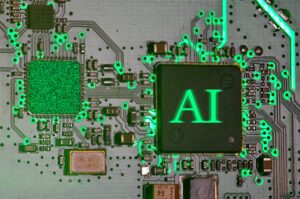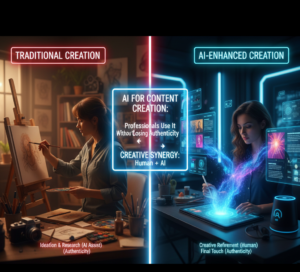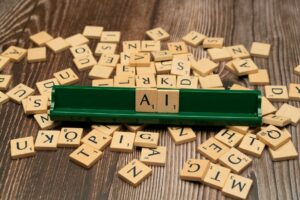Utilizing Artificial Intelligence and the Internet of Things to Strike a Balance Between Supply and Demand

Utilizing Artificial Intelligence and the Internet of Things to Strike a Balance Between Supply and Demand
Imagine a city in which electricity does not just flow from plants to residences without any consideration; rather, it is carefully monitored, modified, and shared in real time, almost like a living network. This vision is fast becoming a reality as a result of advancements in artificial intelligence (AI) and the Internet of Things (IoT), which are seeing widespread adoption. When it comes to the generation, distribution, and consumption of electricity, smart energy grids are bringing about a transformation that is making the whole system cleaner, more efficient, and better equipped for a future that is becoming more powered by renewable sources of energy.
Let’s investigate the inner workings of this technology, why it is significant, and what it may imply for each and every one of us.
The Traditional Grid Confronts a Diverse Obstacle
Traditional energy networks were constructed at a time when the world was less complicated. Electricity was produced by centralized power plants, and it only flowed in one direction to users. All of that, however, has altered as of today. Solar panels are being installed on rooftops by an increasing number of people, automobiles are being driven by electric vehicles, and smart gadgets that draw electricity at various times of the day are being used.
This indicates that demand might vary in an unpredictable manner, while supply itself can change when the sun isn’t shining or the wind isn’t blowing. Previously, maintaining this delicate equilibrium required a significant amount of reliance on human forecasts and big backup power plants, which was a method that was both costly and often inefficient.
IoT and artificial intelligence are the brains and sensors of the modern grid.
What strategies do smart grids use to address these challenges? AI and the Internet of Things come into play at this point.
Smart meters, sensors on power lines, and linked appliances are examples of Internet of Things devices that continuously gather real-time data on the use of energy, the status of the grid, and the weather patterns. A live snapshot of the complete energy system is produced as a result of this, and it is updated after every second.
After that, artificial intelligence systems evaluate this enormous stream of data in order to identify trends, forecast spikes in demand, and automatically adjust supply. In the event that a sudden heatwave causes everyone to put on their air conditioners, the grid is able to respond very immediately, transferring electricity to the areas where it is required the most and minimizing waste in other areas.
Enhancing the Performance of Renewable Energy Sources
One of the most fascinating effects of smart grids is the way in which they facilitate the incorporation of power sources that are renewable. As the sun goes down and the wind dies down, wind and solar power are both clean but variable sources of energy. Artificial intelligence is helpful because it can estimate output based on weather data and adapt other energy sources to cover gaps while doing so.
For instance, artificial intelligence may send a signal to local storage batteries with the intention of saving the extra power when rooftop solar output is strong on a bright day. Later on, when the demand for electricity in the evening increases, the system draws on the batteries rather than starting up a gas plant. With this form of dynamic balancing, renewable energy sources become much more dependable and applicable.
Improved Home and Business Intelligence
Smart grids are not only able to function in the background, but they also have the potential to directly empower customers.
With the help of smart meters and applications driven by artificial intelligence, families and businesses are able to determine when the cost of energy is at its lowest and alter their use appropriately, for as by charging electric cars or running dishwashers during off-peak hours. Some systems are even capable of automating this process, allowing you to save money and lessen your impact on the environment without you having to think about it.
Consumers in some regions have the ability to sell any extra solar electricity they generate back to the grid, therefore transforming their houses into little power plants that contribute to the overall system.
Improving Resilience While Cutting Down on Power Outages
Artificial intelligence (AI) and the internet of things (IoT) do more than simply balancing supply and demand; they also help keep the lights on. Sensors are able to identify faults with equipment or patterns that are not typical, which may indicate a failure. This enables utilities to address minor concerns before they result in power outages.
Artificial intelligence has the ability to reroute electricity past damaged regions during storms or crises, therefore restoring service more quickly and keeping more houses connected.
The Obstacles, as well as What Lies Ahead
Building completely intelligent grids is not an easy task, despite the potential they hold. The protection of customer privacy, the implementation of cybersecurity measures, and the upgrading of infrastructure are all significant problems. It is also necessary for utilities, technology firms, regulators, and regular consumers to work together to coordinate their efforts.
But there is already evidence of development in the form of cities and municipalities adopting more intelligent systems. Artificial intelligence (AI) and the internet of things (IoT) are expected to become more commonplace in the energy industry as technology continues to progress and prices continue to decrease.
Why It Is Important
When it comes down to it, a smart grid is all about striking a balance: ensuring that supply and demand are in equilibrium, minimizing waste, and assisting greener energy sources in taking the spotlight. By merging the intelligence of artificial intelligence with the real-time awareness of the internet of things, these grids offer not just technological efficiency but also a cleaner, more resilient, and more responsive energy future.
It is a development that affects all of us, from the appliances that we have in our kitchens to the power plants that are on the horizon, and it demonstrates how technology and sustainability can work together to create a more intelligent society.






